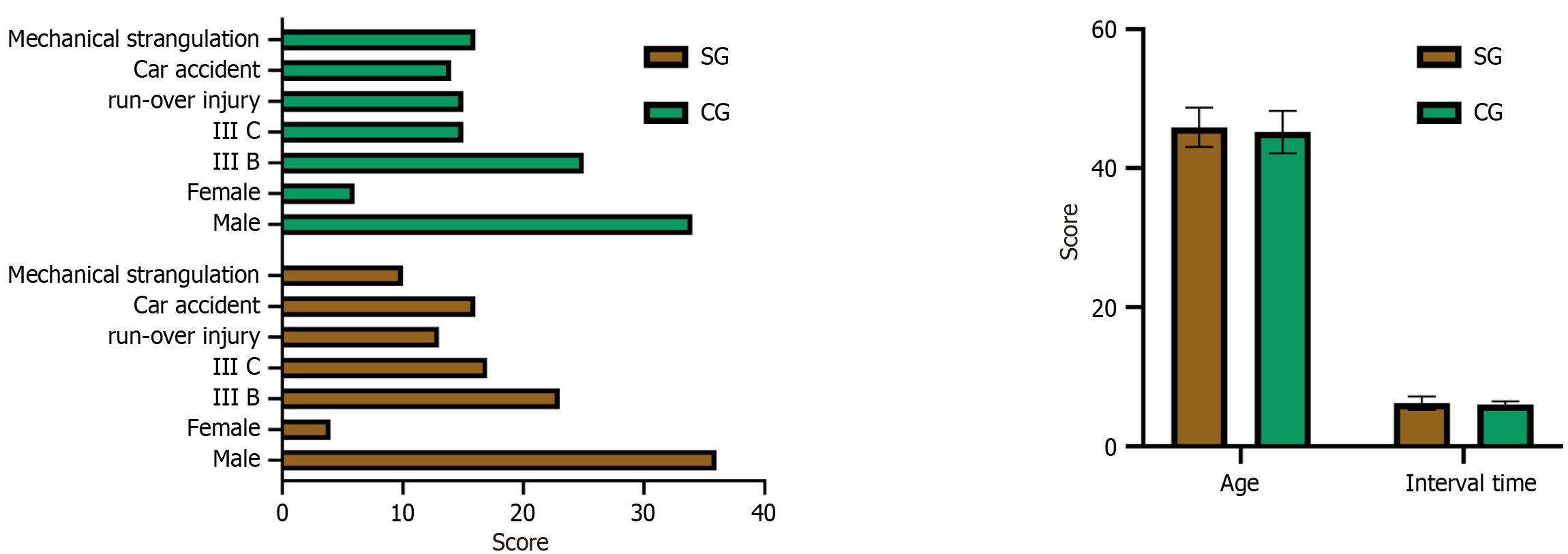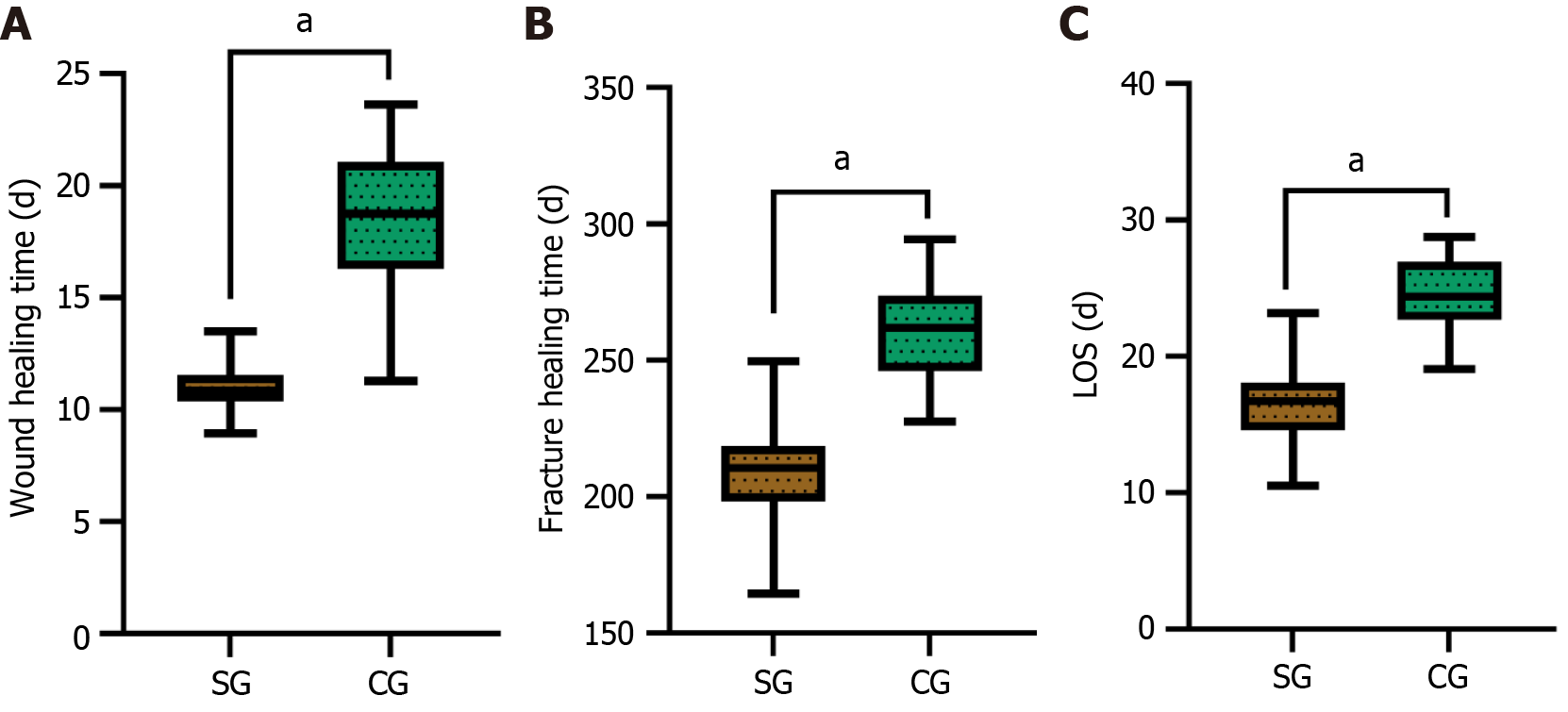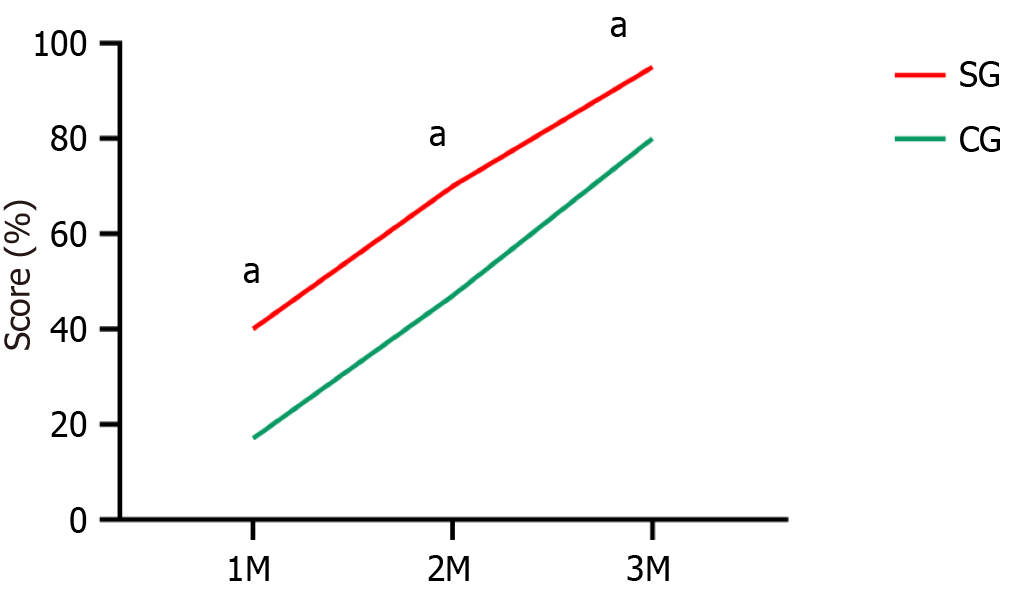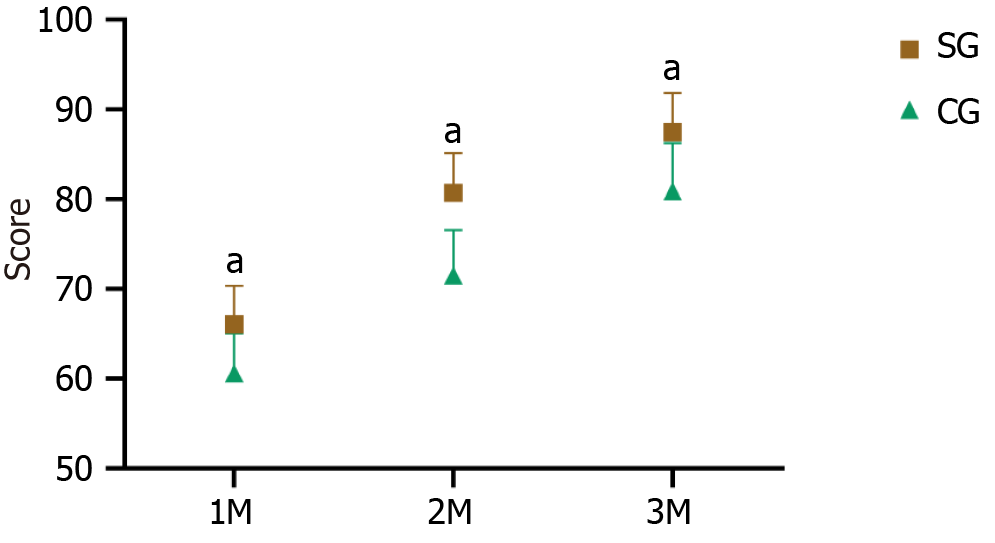Copyright
©The Author(s) 2024.
World J Clin Cases. Jul 16, 2024; 12(20): 4199-4205
Published online Jul 16, 2024. doi: 10.12998/wjcc.v12.i20.4199
Published online Jul 16, 2024. doi: 10.12998/wjcc.v12.i20.4199
Figure 1 General clinical data of the two groups of patients.
The general clinical data of the two groups of patients, such as age, sex, type of injury and disease, were not significantly different. CG: Control group (received conventional dressing change); SG: Study group (received negative pressure closed drainage).
Figure 2 Rehabilitation indicators.
The wound healing time, fracture healing time, and hospital stay of the patients among the study group (received negative pressure closed drainage) were all shorter than those among the control group (received conventional dressing change), and the variation between the groups was notable (aP < 0.05). LOS: Length of stay.
Figure 3 Rate of negative bacterial culture at the wound site.
After 1 mo, 17.50% of patients from the control group (received conventional dressing change) had a negative bacterial culture from the wound site, which was lower than the study group (received negative pressure closed drainage). After 2 mo and 3 mo, the proportion of patients from the control group with a negative bacterial culture at the wound site increased to 47.50% and 80.00%, which was still lower than the study group (aP < 0.05).
Figure 4 Injured limb marks during follow-up.
The Puno injured limb marks of the patients among the study group (received negative pressure closed drainage) were notably increased compared to control group (received conventional dressing change) (aP < 0.05).
- Citation: Fang B, Wang YS, Li W, Ying K, Zong G. Value of negative pressure sealing drainage on wound healing of Gustilo IIIB and IIIC open fractures. World J Clin Cases 2024; 12(20): 4199-4205
- URL: https://www.wjgnet.com/2307-8960/full/v12/i20/4199.htm
- DOI: https://dx.doi.org/10.12998/wjcc.v12.i20.4199












